




Spring/Summer 2024
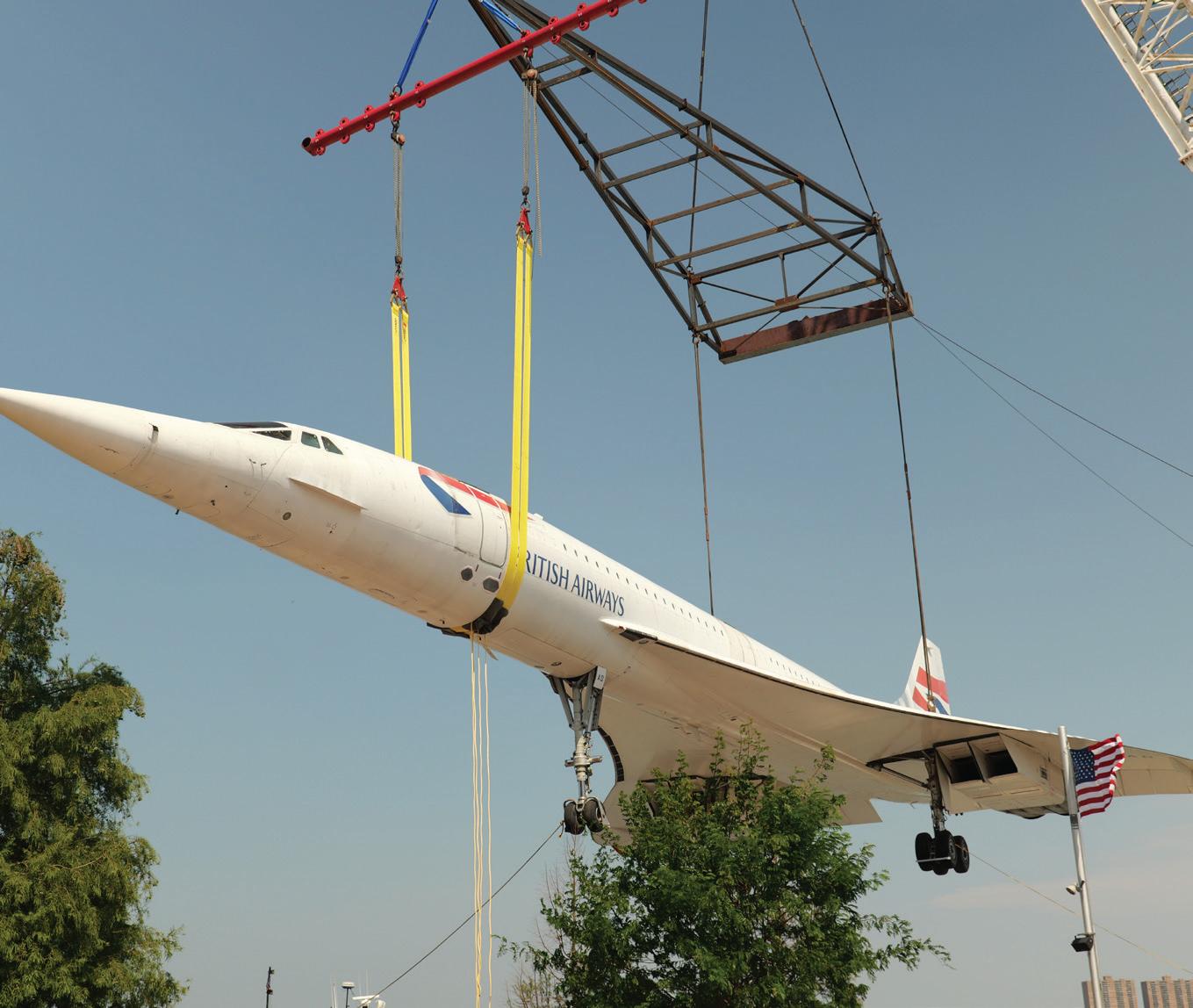
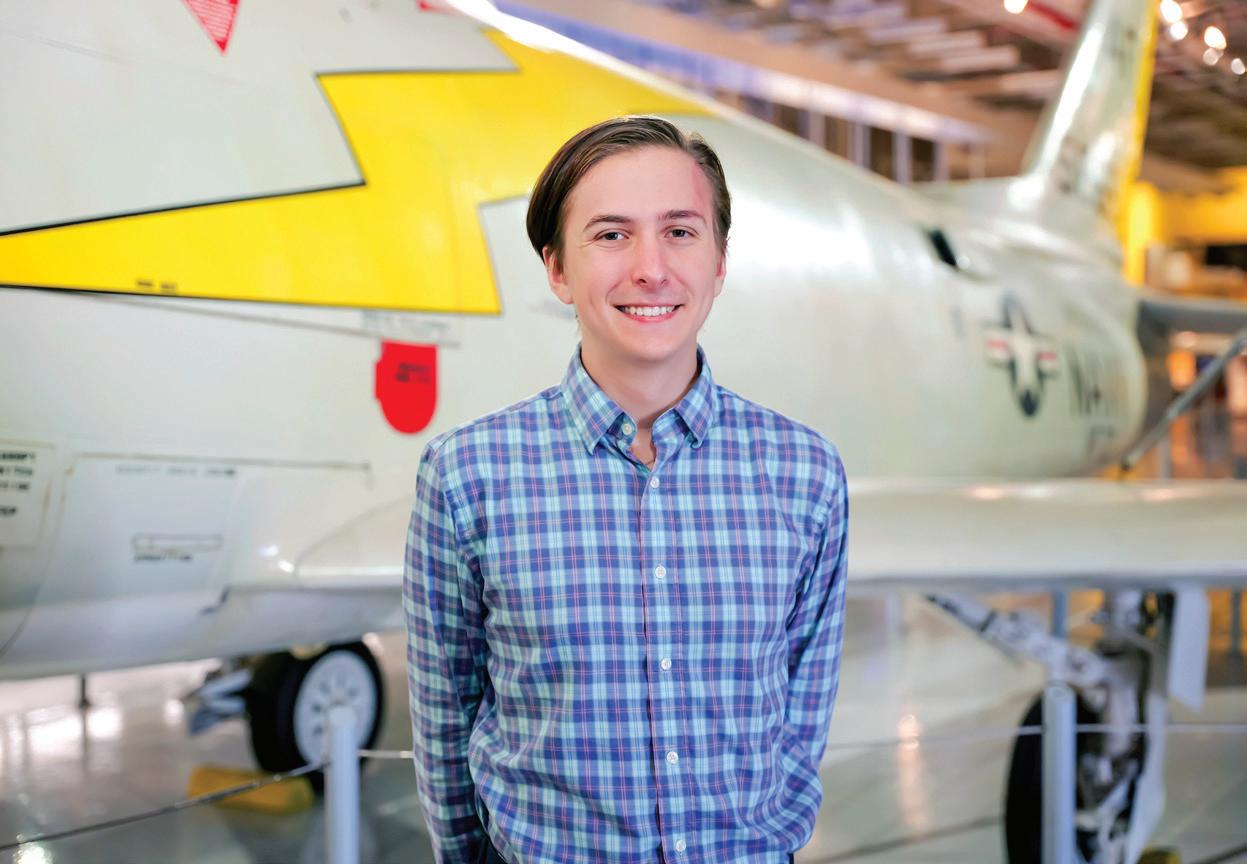

Exhibitions are taking center stage at the Intrepid Museum this spring/summer. Between Apollo: When We Went to the Moon —the largest temporary exhibit ever installed at the Museum; development of a virtual reality experience for inaccessible shipboard spaces; and infrastructure work to open 7,000ft 2 of Intrepid ’s second deck—including sick bay, the barbershop and post office—it would be an understatement to say our Exhibits and Curatorial staff are busy! For some insight into these exciting projects, we thought you should hear directly from two employees at the center of these efforts: Curatorial Research Assistant Ephraim Kozodoy and Senior Archivist Jennifer Milani.
EPHRAIM KOZODOY: My main responsibilities are research and content development for the Museum’s upcoming virtual reality exhibit, which will recreate Intrepid ’s forward engine room and number 2 fire room as they were in service. One of the most fulfilling aspects of the project has been interviewing former crew members who worked in the ship’s engineering spaces. Those conversations brought the engine rooms and fire rooms to life, and allow us to tell those previously unheard stories.
JENNIFER MILANI: My role covers exhibit planning related to the collection, from providing access to curatorial associates like Ephraim, to installing artifacts in exhibition spaces. As Senior Archivist, I also work with the Exhibit Fabrication team to create mounts that best display and protect our artifacts. I am looking forward to featuring the collection in second deck, especially in the post office where we can showcase letters written and received aboard Intrepid. This is an exhibit that we’ve been planning and working towards for years. I’m so excited for our supporters and visitors to finally see second deck!
The engine room virtual reality experience has been made possible through the generous support of Museum trustee Tom Secunda and the Secunda Family Foundation. Apollo: When We Went to the Moon has been partially funded thanks to generous support from Greg Olsen.


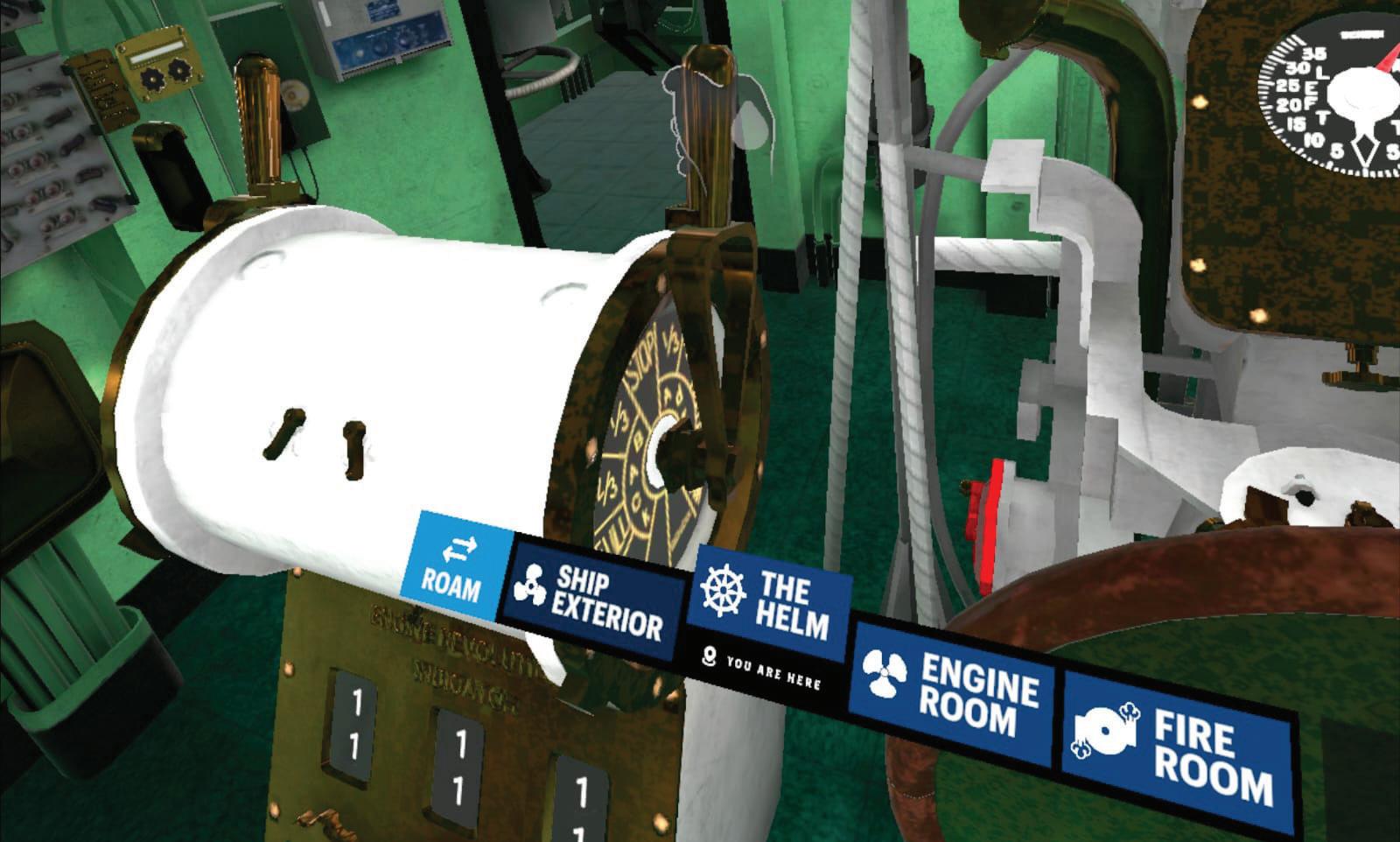

While in service, Intrepid reached speeds of up to 32 knots (37mph/59kph). This incredible feat was made possible by a propulsion system that used superheated steam to turn Intrepid ’s four 27,000lb (12,247kg) propellers. Visitors can see one of these massive propellers displayed on the hangar deck, but the machinery that drove it is in an area that remains off-limits to the public. Fortunately, the Museum’s recently concluded 3D scanning project has mapped these spaces for digital upload and use in cuttingedge interpretive efforts. This process has culminated in a pilot project aimed at bringing Intrepid ’s engine and boiler rooms to life in an immersive mixed-reality experience available onsite and at home.
The experience places you on the ship’s navigation bridge as the crew receives news that astronauts Gus Grissom and John Young have splashed down in their Gemini capsule. Intrepid must ring up speed to recover them as quickly as possible. You then move through the ship to learn how an order from the helm travels down to the engine and boiler rooms. Through archival photographs and oral histories from the men that worked in these spaces, you see and hear how crew members have to work together to make this massive aircraft carrier cut briskly through the waves.
In addition to virtual reality headsets, users will be able to access the program through mobile devices and tablets and will be able to choose whether their experience is guided or self-guided. The engine and boiler rooms are just a couple examples of spaces that will likely never be open to visitors. Thanks to the generosity of Museum trustee Tom Secunda, and the Secunda Family Foundation, whose support has underwritten this pilot virtual tour experience, the Museum is able to ensure that the ship’s historic spaces can be made accessible to visitors across the globe.

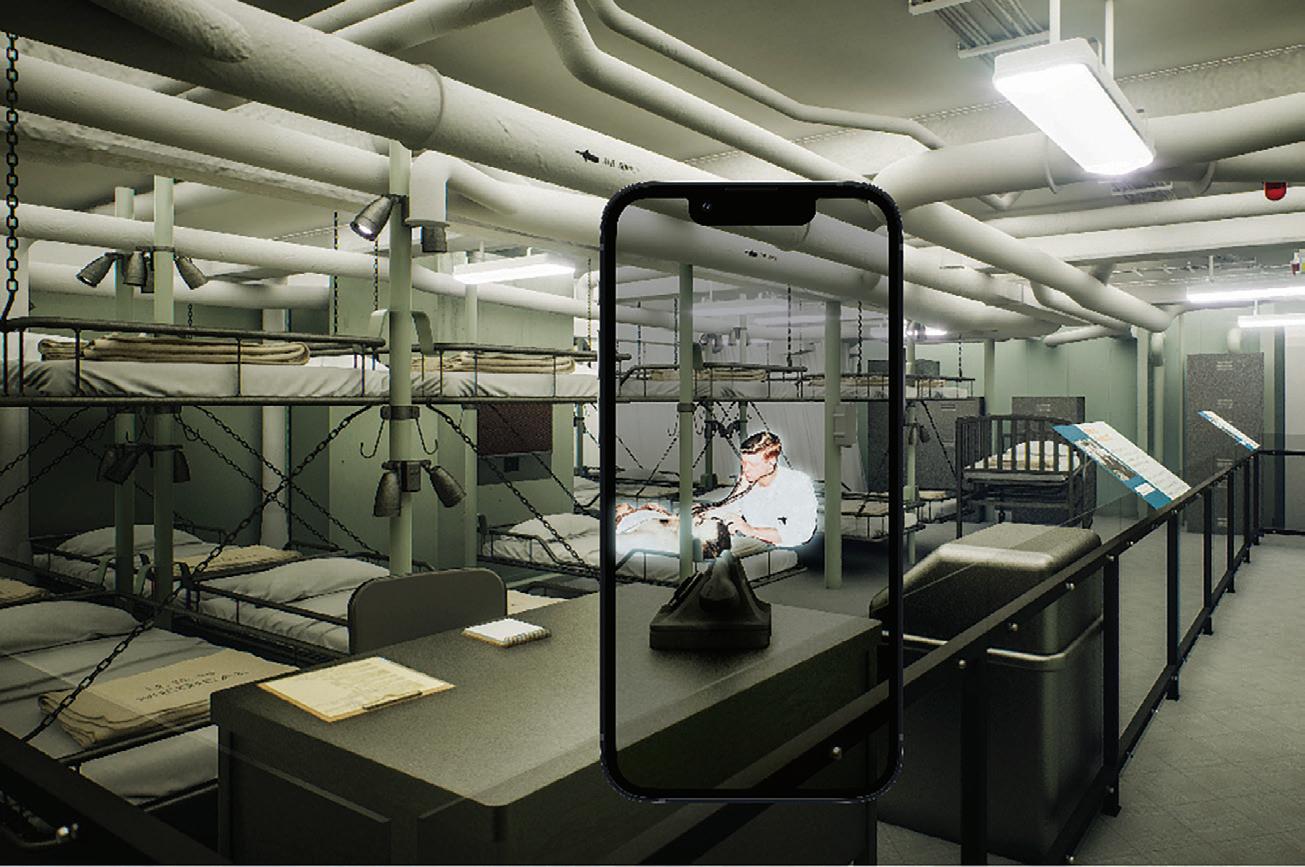
The Second Deck Restoration Project—the Intrepid Museum’s largest preservation, restoration and historic interpretation effort in two decades—is nearing the start of critical infrastructure work as part of this ambitious goal.
The centerpiece of this project is Intrepid ’s medical facility, known as sick bay. This area served as the ship’s hospital, doctor’s office, pharmacy and more. The first phase of opening Second Deck began with the opening of On the Mend in 2022. This exhibition, located on Intrepid ’s hangar deck, gives visitors a sneak preview of sick bay while also describing the process of opening an historic space after so much time has passed.
The scope of this project also includes nearby spaces like the barbershop and post office. The full 7,000ft 2 section of Intrepid will utilize physical artifacts, archival photographs, and oral histories to connect visitors’ own experiences to those of Sailors, Marines and Airmen who served aboard ship from the height of World War II through the Vietnam era.
Infrastructure work on Intrepid ’s interior spaces will include mechanical, electrical and steel work, as well as bringing the spaces up to building code and safety standards.
Thanks to 3D scans of Intrepid taken between 2015 and 2023, the Exhibitions team has been able to minimize alterations, thereby preserving the integrity of Intrepid as a National Historic Landmark.
The infrastructure phase of exhibition development has received funding from the National Endowment for the Humanities, New York State Council on the Arts and a number of private donors.
At a whopping 9,000ft 2 , Apollo: When We Went to the Moon takes up virtually the whole footprint of the Museum’s Space Shuttle Pavilion. The exhibition is jam-packed with incredible space artifacts that tell the story of humankind’s first Moon landing and immersive media displays that allow visitors to share in the excitement of that pivotal moment in history.
Speaking about the new exhibition, the Museum’s Senior Space Advisor, former NASA astronaut Mike Massimino, said, “As a child, the awe-inspiring marvel of humans landing on the Moon fueled my dream of becoming an astronaut…I’m excited to see this transformative moment for me, on display for all.”
The Intrepid Museum was the perfect venue to host this unique exhibition. As the Museum’s President, Susan Marenoff-Zausner noted, it “underscores Intrepid ’s historic heritage with the space program, having served as a primary recovery vessel for the Mercury-Atlas 7 and Gemini 3 space missions…” It also connects the dots between the Museum’s major artifacts: as Intrepid played a role paving the way for the Apollo program in the mid-20th century, shuttle Enterprise embodies NASA’s shift in technology and vision in the late-20th century.
The exhibition will be on display at the Intrepid Museum through September 2, 2024, so there is still time to share in the magic of the Apollo experience!
Apollo: When We Went to the Moon is a collaborative effort between the U.S. Space & Rocket Center’s education and curatorial staff and Flying Fish, a world-renowned traveling exhibition company. Apollo: When We Went to the Moon at the Intrepid Museum has been partially funded thanks to generous support from Greg Olsen.
5 Entrance of exhibition
6 Two visitors look at the model rockets

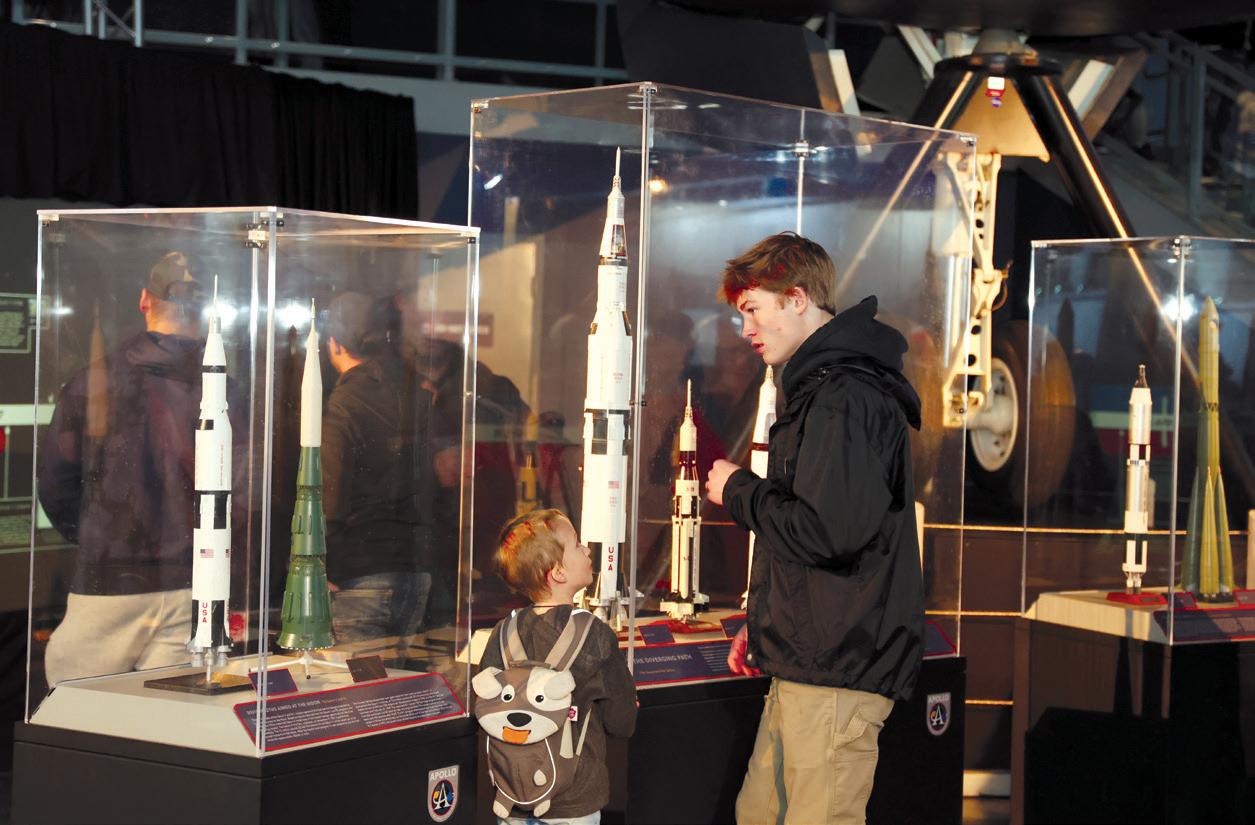
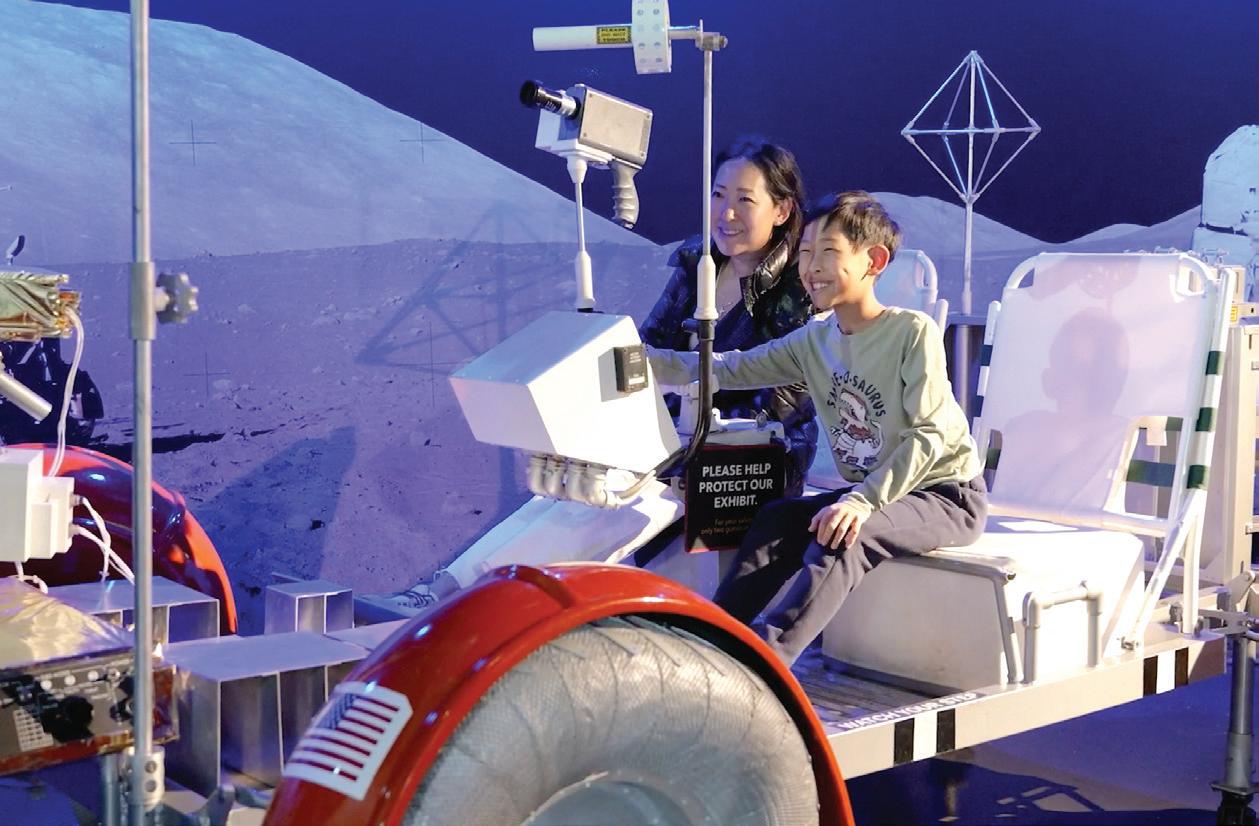
7 A family enjoys the lunar lander experience
8 Overview of exhibition underneath the Space Shuttle Enterprise



British Airways Concorde G-BOAD, known affectionately as “Alpha Delta,” made its way back to the Museum this past March after receiving a nose-to-tail preservation and restoration treatment at the Brooklyn Navy Yard. And even though Alpha Delta’s return trip to Pier 86 proceeded slowly—approximately three hours from Jersey City to Hell’s Kitchen, roughly the time it took Concorde to cross the Atlantic Ocean—the plane’s fresh coat of paint and iconic dart-like silhouette still exuded supersonic speed. Aviation enthusiasts from around the world tuned into the Museum’s “Concorde cam” to watch Alpha Delta float past New York City icons like the Statue of Liberty during its three-hour trip upriver. At the end of its voyage, the plane was carefully hoisted back into position at the west end of Pier 86.
In May, the Museum held a special ribbon cutting event on Pier 86 located in Hudson River Park to celebrate the return of Concorde as well as the completion of renovations to the pier. Thanks in part to generous support from Museum trustees Stanley Hubbard and Charles De Gunzburg, the old chiller plant on Pier 86 has been demolished, freeing up an additional 4,000ft 2 of park space for public enjoyment.
This renovation will also enhance the Museum’s footprint, providing additional space for events and festivals throughout the year.
The pier renovation project is supported by congressionally directed funds generously allocated by Congressman Nadler, public funds designated by the members of the state legislature and administered by the Dormitory Authority of the State of New York (DASNY), the Empire State Development and NYC Regional Economic Development Council, the NYC Economic Development Corporation, the NYC Department of Cultural Affairs in partnership with the City Council and the mayor of the City of New York, and the Office of the Manhattan Borough President.
Support has also generously been provided by Stanley and Karen Hubbard and Charles and Nathalie de Gunzburg | The Canary Charitable Foundation.
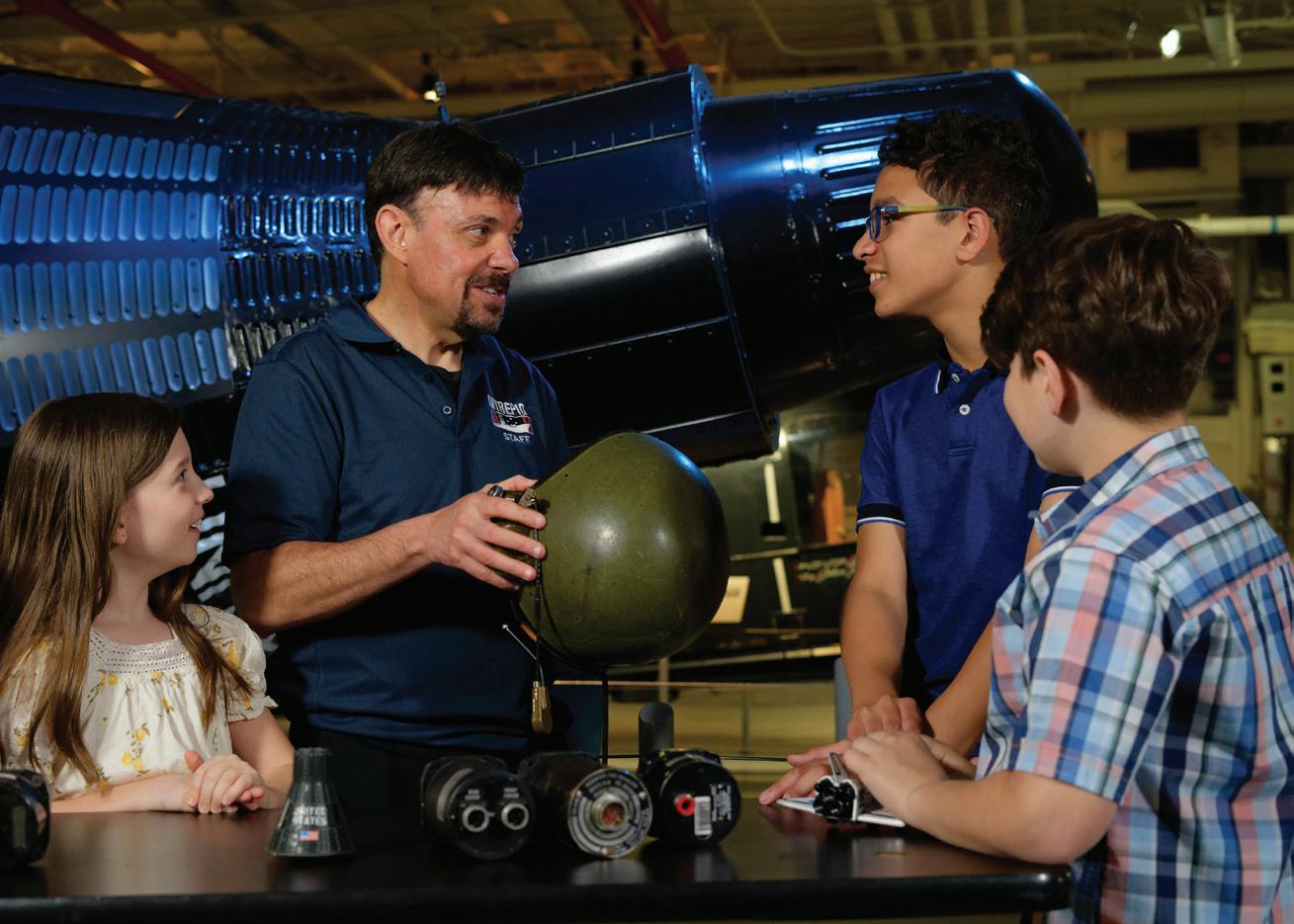
The Intrepid Museum’s talented education staff knows that history and civics education play a vital role in developing tomorrow’s leaders. Last fall, the Museum was awarded a grant through the Educating for American Democracy (EAD) Initiative to develop and implement an innovative civics curriculum.
The result was a series of student and teacher programs in partnership with nearby P.S. 51 Elias Howe School designed to make civics more tangible and relevant to students. Though the partnership held its final session on June 7, the program was designed to be replicated by other historic sites and museums across the country.
Intrepid Museum Educators will use key takeaways and evaluation data to create generalized lessons for exploring civics themes with K-5 students, including primary source suggestions and recommendations for teachers based on the Museum’s experiences.

The Intrepid Museum’s Education department partnered with the National WWII Museum for teacher professional development sessions on January 29 and April 20, 2024. The sessions focused on stories that are often overlooked in classroom discussions of World War II. Though the January event was held virtually, the April session took place onsite at the National WWII Museum and included presentations by Intrepid Museum educators Jonathan Milard and Michael Stevens.
The two sessions served 124 teachers in total, impacting the 11,150 students in their classes. Sessions highlighted lessons and resources from the Museum’s Full Muster project funded by NEH, which supported the development of inclusive interpretation and curriculum materials.
One Intrepid Square W. 46th Street & 12th Avenue, New York, NY 10036-4103
Some spaces, like the ship’s engine and boiler rooms, used to be less well-represented in the Museum’s collections. Thanks to a recent windfall donation of historic images, however, the Museum’s engine room virtual reality (VR) project is coming into clearer focus.
These photographs, including the one shown at top, reveal pumps and other components that are no longer present in the engineering spaces. These elements can now be digitally added into existing 3D scans to improve their historical accuracy.
Physical restoration of sick bay is aided by images like this one at bottom showing the X-ray room. However, sick bay went through a number of different configurations during Intrepid’s years of service from 1943 to 1974. Accounting for this requires exhaustive research and significant expenditure of staff hours.
This combination of research, historic collections, and oral history interviews with former crew members will make these projects compelling and help the Museum bridge the past and present for its visitors.

